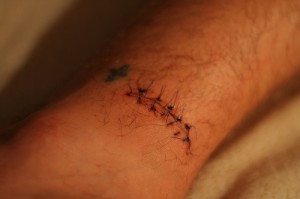Choosing the right procedure from among the ankle surgery types can be a hard task indeed. These days there are a number of types of ankle surgery for people suffering from articular cartilage damage. For a patient there are a couple of reasons that will help him decide whether he wants to go in for this treatment procedure:
- The treatment procedure will provide relief from the pain
- Improves the function of the ankle
- Helps slow the progression of the damage
- Helps in delaying joint replacement surgery, if necessary
Information About Ankle Surgery Types
There are several things that are taken into account before performing the surgery on an ankle joint to see if the patient’s style of living and needs will be met by the treatment options.
- Age
- General usage of the ankle or activity level of the ankle
- Lifestyle (in the case of athletes)
- Previous surgeries performed, if any
- Description, location and size of the defect
Based on these, there are mainly four ankle fusion surgery types available in case of articular cartilage repair.
Ankle Surgery Types #1 – Arthroscopic Lavage and Debridement

This is also known as arthroscopic ankle surgery and the procedure is carried out through a keyhole. Lavage refers to the process of cleaning out the joint and debridement refers to the removal of any unstable and degenerate cartilage flaps. This treatment helps decrease pain, irritation and inflammation but only for a short while. This is only a treatment procedure and is not a repair procedure as the cartilage is not repaired in this process. It is mainly for patients with small defects.
Ankle Surgery Types #2 – Marrow Stimulation Techniques
This is done in two steps:
- First the damaged cartilage is removed so that the underlying bone is completely exposed
- The subchondral bone is penetrated to create a clot inside the defect
This is generally used for defects that are caused due to sudden injury rather than due to wear and tear. Patients fare well for one to two years but the implanted fibrocartilage begins to wear away after a while. There have been cases where the repaired tissue has worked perfectly for some patients. Statistically, this surgery is not very promising as it is sometimes used as an intermediate step rather than as a final surgery.
Ankle Surgery Types #3 – Ostechondral Autografts and Allografts
In an autograft, small cylindrical plugs of cartilage are taken from some other part of the patient’s body and these plugs are later inserted into the drilled holes inside the chondral defect. This can be done either arthroscopically or by making a small incision. This is done for defects which are limited in size because for greater defects, taking plugs from the knee joint will cause a defect.
The procedure for an allograft is the same as that for an autograft, but in an allograft, the plugs are taken from a deceased person rather than from the patient himself.
Ankle Surgery Types #4 – Autologous Chondrocyte Implantation
This procedure consists of two stages. In the first stage, the chondral defect is assessed using arthroscopy and if it is viable for the procedure, a sample of cartilage cells are taken from the femur and sent to a lab where these cells are nurtured for anywhere between three and six weeks.
In stage two, an incision is made and the chondral defect is prepared to be injected with the new cartilage cells. All these ankle surgery types have their own levels of risk and it is best for an individual to consult a doctor and understand the procedure that is best for him post ankle surgery.